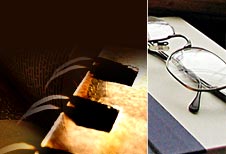„Burial Customs in the Land of the Bible from the Chalcolitic Period to the Herodian Period (4300 B.C.E. - 70 A.D.). General View”
Przegl±d Archeologiczny 49 (2001) 47-58.
In this paper the author describes briefly the burial customs in the land of the Bible from the Chalcolithic period to the Herodian period (4300 B.C.E. - 70 A.D.), confronting archeological evidence with biblical data. On the basis of archeological and biblical data he can deduce the most important and common beliefs concerning the death and afterlife of population in this period. Through the ages we encounter here a number of burial customs. He shows only the main funerary customs concerning the type of tombs (dolmens, tumuli, simple graves dug into the ground, tombs in caves, shaft-tombs and the megalithic tombs, bilobate tombs, niche tombs, tombs shaped as rectangular cists, tombs formed like ”four-room houses”, the rock-cut tombs and chamber tombs), burial offerings (all types of pottery vessels: pots, jars, bowls, jugs, juglets; weapons, jewelry, tools, seals, lamps, perfumes to counteract the process of decay of the body, coins) or inscriptions. He shows that the beliefs of the populations that inhabited the land of the Bible concerning the afterlife are strictly connected with the burial offerings. In each part of the paper we give some examples of actual cemeteries, tombs or burial places of each historical period. Describing briefly the results of the excavations in the most important burial places he also shows the characteristic features of each of these places. Sometimes it is helpful to recall the biblical quotations.
back

